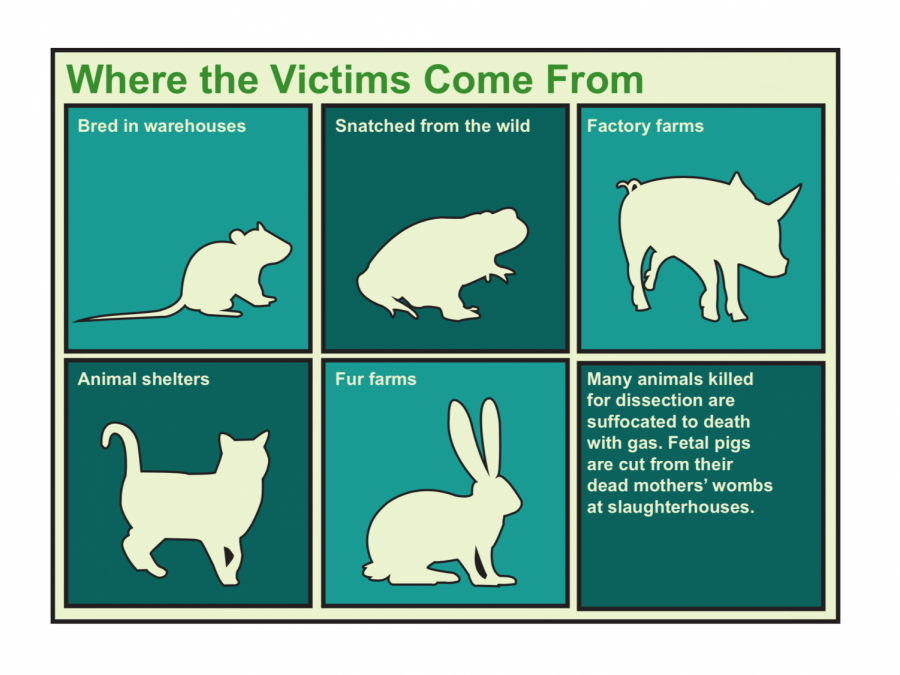Con: Animal dissections
Pigs. Rabbits. Cats. Frogs. Sheep. Starfish.
All of these are animals that commonly get dissected in middle schools and high schools for classes like biology and anatomy. Although this might be a fun time for some students, many find it disturbing and inhumane.
PETA, People for the Ethical Treatment of Animals, has been working for years to help animals get treated with the respect that they deserve. They claim that “dissection is dangerous, unethical, and unnecessary.” This is for many reasons.
Here are some:
1. Children are getting exposed to traumatizing visuals that may change their minds about being doctors and veterinarians in the future.
2. Science has already explored all the parts inside of animals. Therefore, it is unnecessary for more animals to get killed for students to see these parts, when they could experience them on virtual versions of dissections that are just as educational.
3. Students are given sharp tools that could be harmful to themselves in the process of dissections.
4. Many animals that are killed to be cadavers are not treated with respect by students.
5. Dissection teaches students that it is okay to sacrifice animals’ lives in order to learn, when there are many more beneficial methods of learning what is needed to pass the class and go into medical professions.
6. Many students find dissection disturbing, but are too scared too speak up because they are afraid of looking weak to their peers.
7. Purchasing cadavers and the tools required for each dissection is very expensive and could be avoided by the use of virtual dissections that are safer and easier.
Many teachers do not give students the opportunity to participate in online dissections where they are able to follow along in the class, but at the same time not have to go against their morals.
I have been in many classes since about 7th grade that have included dissections of everything from pigs to worms. Each of my teachers has told me that I have to participate in the dissections of the animals even though I made it very clear that I was uncomfortable with the situations. Most of the time, I ended up being the photographer of the group because it was the most hands off approach that I could come up with.
Virtual dissections, such as BioDigital 3D, McGraw Hill dissections technology, and Dissection Works, are better ways for students to understand the functions and placement of the different parts of animals. They are easy to redo multiple times in order for students to better grasp what they need to know, whereas actual dissections are unable to be redone and each student only has one chance at learning the material. There may be problems with the animal that is being used for the experiment such as misplacement of a part, or lack of a certain part that would deter the progress of the student. In virtual dissections it is guaranteed that each animation will have all of its’parts in order and will be the best option for students to use.
Virtual dissections have many benefits that are not available in actual dissections. They are cheaper, have no horrible smell, are redo-able, but most of all, they do no harm to innocent animals in the process. Online dissections should be the only dissections used in schools. Many medical schools are already using this method. High schools and middle schools should follow their example in order to preserve animals’ lives and produce a happier and safer climate for students in the classrooms.

